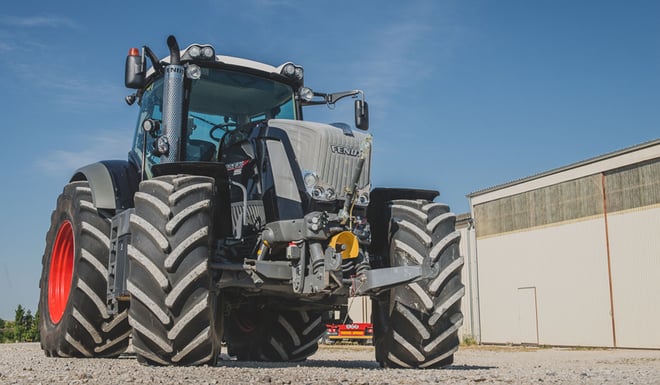Fuel represents an important line in a farm budget (whatever the type of farm). It effectively represents 30% of the global energy consumption in agriculture.
To improve your economic performance, it is therefore vital to exercise tight control over fuel costs. For this, several equipment related aspects can be optimised, in particular in relation to your agricultural tyres.
Your fuel consumption depends on your operations
Fuel consumption depends essentially on the type of crop and the crop farming methods used as this determines the frequency of your trips back and forth over the land. Adapting your crop farming methods with a view to reducing this frequency could therefore potentially be a way of reducing your consumption. However, if your crop farming model cannot be changed, there are 6 principal points to modify to reduce your fuel consumption with the choice of equipment and its maintenance playing a crucial role in reducing the cost of each passage.
Choose the right tractor tyres
The dimension of your tyres must be adapted to the use of your tractor (sowing, ploughing, transport, etc.), its power and the type of soil. A farmer in the United Kingdom (who took part in the Efficient 20* project) reduced his fuel consumption by 30% by replacing his original tractor tyres with more suitable tractor tyres (135 hp) for ploughing operations (5 furrow plough).
Set the right pressure
Adopting the right pressure setting does not just preserve your soil and optimise yields. It also reduces your energy consumption. Indeed, excessive slippage (overinflated tyres) generates additional pulling effort which may increase the quantity of fuel required for your operations by 20%. Check your tractor’s slip ratio which should ideally be between 12% and 15%.
In addition, optimising tyre pressure can allow you to save 10% on fuel compared to maximum tyre pressure, i.e. the pressure recommended for use on the road.
Adjust your tractor settings and tools
It’s also essential to have the right settings on your equipment in order to recover the traction supplied by your tractor as efficiently as possiblee For this, pay attention to the following points:
- Check your tractor’s lead/lag. Lead/lag is the relationship between the speed of the front wheels and the speed of the real wheels. Lead is calculated using the manufacturer data and is optimal at between 0% and 2%. Beyond this, the rear axle slows down the front axle, loosing part of the tractive force. This also causes premature wear of the tyres and problems with steering.
- Check there are no problems with camber, which is the inward or outward angle of the tyre. Positive camber (toe-in) is when the tyres tilt inwards and negative camber (toe-out) is when the tyres tilt outwards. Too much tilt inhibits the tractor’s progress and causes loss of energy.
- Check there is no wheel misalignment, which is caused by the tyres being at an angle compared to their forward direction. An angle of 0 to 1 mm is correct.
- Check that your tooling is properly adjusted. For example, incorrect alignment of your plough will cause a drift which will have to be corrected by steering with negative consequences on slippage, fuel consumption and tyre wear.
- Optimise weight distribution on the basis of your tractor’s power to weight ratio (49 kg/hp is a usual ratio). If necessary, add weight to the front or back of your tractor. Tyre ballasting may be a solution.
Adapt your engine speed
Most farmers drive “by ear” which is not the most economical way to drive. The right engine speed is around 1850 rpm. This gives you the best ratio between the power supplied by the tractor and the consumption of fuel. The savings may vary by a few % (6.5% for plowing or decompaction) to nearly one quarter of your consumption (26% for sowing operations or transportation).
The Bridgestone-agriculture.eu blog is written and administered by tractor tyre experts who are available to provide you with the advice you need on the subject of your tyres. They allow you to maximise your productivity and help with the management of your operations with information on all subjects linked to tyres: Technical data for agricultural tyres – Agricultural tyre performance – Air pressure advice – Solutions to avoid soil compaction – Sprayer tyre pressure – Why and how to ballast your tractor tyres – etc…
To take it one step further and increase the profitability of your farm, les Experts du pneu provide a free, highly detailed eBook which explains the essential role of the agricultural tyre in your productivity.
Most people who read this article have also read some of the following articles:
This information is intended only to make you aware of the technical and functional aspects of agricultural tires and their use. It does not allow you to make a judgment or a definitive conclusion on a given problem. Only your agricultural tire expert is able to make a technical assessment and take a final decision, case by case.
Leave a
commentary
Your email address will not be published.
Required fields are indicated with *







